Under the moniker of Skygoblin, Theodor Waern, with music provided by Simon D’souza, has written, painted and animated a standout freeware indie adventure that is perhaps most easily described as an amalgamation of three LucasArts classics from the past: Monkey Island, Full Throttle and Grim Fandango. Even if the game does recall the meta-level humour and carnivalesque of the first, the animations and the magnificent meld of 2D/3D of the second, and the stylish ambiance and setting of the third, all in all, Waern’s series – The Journey Down – is no simple exercise in nostalgia.
At this juncture, I would love to point you all to our interview with the game’s designer, Theodor Waern, published in conjunction with this review. In the interview, we discuss the game’s unique look and feel, Waern’s inspiration for the game and find out more about the game’s history and development.
The first chapter, “Over the Edge,” finally released after being four years in the making, tells the story of Bwana and Kito, brothers abandoned by their adoptive father captain Kaonandodo, whose abrupt disappearance left the brothers struggling to make a living. Apart for some slight “financial instability,” the duo has been running Kaonandodo’s Gas and Charter ever since, that is, until the Armando Power Company throws a proverbial wrench in their gears.
Suddenly, deus ex machina, a damsel in distress appears both willing and able to bail the twins out of their predicament; only, this mysterious bookworm - the university assistant Lina - soon reveals their adoptive father is somehow tangled up in a mysterious conspiracy related to the Armando Power Company. In the backdrop also looms the mysterious, forbidden Underland.
By far the most distinctive feature of The Journey Down is its unique graphical look and feel that, much like Grim Fandango’s (the closest point of comparison), also extends beyond the surface into a more coherent fantasy.
On the outset, I expected Waern to have utilized Polynesian materials as the base for his graphical style, but instead Waern has put together a real hodgepodge of various African sources. For instance, according to Waern, Kito – Bwana’s sidekick – was based on east African Makonde style, while some other characters, like Bwana, were inspired by central African Chokwe carvings. It is utterly striking how these designs seem to inhabit the very same space that the Calaca occupied in Grim Fandango.
In our interview, Waern also explained that while many of the game’s characters were simply given names without research, some of them are actually traceable to Swahili and other African languages. In this way, the game is, like Waern himself described the game, a “mess of different styles.”
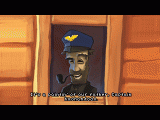 Apart from the strikingly designed facial features for each character and the awe-inspiring presence of the metropolis that is St. Armando, looming in the background, the primary strength of the game is its immediacy and welcoming style of gameplay. The game succeeds in capturing the player’s interest at once simply by making the game’s fiction understandable in mere minutes – something that classic adventures always seemed to excel and even take pride in: A pirate wannabe? Check. A bad-ass biker? Check. An undead travel agent? Check. You’re instantly at home, pointing and clicking Bwana around Kingsport.
Apart from the strikingly designed facial features for each character and the awe-inspiring presence of the metropolis that is St. Armando, looming in the background, the primary strength of the game is its immediacy and welcoming style of gameplay. The game succeeds in capturing the player’s interest at once simply by making the game’s fiction understandable in mere minutes – something that classic adventures always seemed to excel and even take pride in: A pirate wannabe? Check. A bad-ass biker? Check. An undead travel agent? Check. You’re instantly at home, pointing and clicking Bwana around Kingsport.
Now, beyond the unique visual direction and the aforementioned game influences, there exist at least three potential points of contention in “Over the Edge” that relate to the game’s allure.
Firstly, the game exhibits an uncanny ability to roll forward with superb momentum, constantly leaving you pleased with your puzzle-solving performance. In fact, some of the game’s puzzles are deviously simple, and as the game is medium length, it should offer an hour or two of gaming for most players. But this is no complaint - truly, where the game excels is in its carefully crafted balance, polish and eye for pacing; many locations were simply left out by the developer in order to maintain better and smoother playability, and Bwana indeed traverses Kingsport at true and tested LucasArts speeds (something that Telltale mucked up in their “Tales” series, for instance).
Like many adventures, the central puzzles figure around gathering ingredients - luckily made easy by the game’s highly intuitive (read: standard) interface. A directional arrow that appears when hovering over doors helps pinpointing passageways and entrances. The inventory is standard fare, too, with combination puzzles to go. Having only one save game slot is one of the few bigger offences towards adventure gaming aficionados.
Apart from the puzzles’ easygoing nature, another feature that may be divisive – and potentially a real deal breaker – is how in “Over the Edge,” Bwana has to have a reason why for his actions. If he is yet to find a meaningful use for an object or an item, he’ll simply shrug it off for the time being. I personally view this aspect to the game simply as successful writing, but others may disagree with Waern’s chosen method.
 Finally, the game does utilize Ron Gilbert and Tim Schafer -like meta-level comedy and writing, and thus often pokes fun at the common threads found in adventure games, including the kleptomania that so deeply permeates the genre. There may be moments in the game where these aspects of the writing can take players out of the game’s base-level fiction.
Finally, the game does utilize Ron Gilbert and Tim Schafer -like meta-level comedy and writing, and thus often pokes fun at the common threads found in adventure games, including the kleptomania that so deeply permeates the genre. There may be moments in the game where these aspects of the writing can take players out of the game’s base-level fiction.
There does exist a slight lack of polish with the writing, primarily typographical, but easy to shrug off as characterization appropriately remains its chief focus. Intriguingly, several dialog trees also exist with choices that can only be accessed on separate replays.
While the game’s debt to both Full Throttle and Grim Fandango - the former thematic and technical, the latter stylistic – remains obvious, the game primarily operates closest to Monkey Island, and not only because of Kingsport Bay, an industrial cargo dock and one of the seven bays that surround St. Armando. In conversation, Waern explained to me that he simply believes the maritime theme and adventure games go well together. “No point fixin’ that which ain’t broken eh?,” he quipped.
Simon D’souza’s bubbly and energetic reggae compositions also highlight the aforementioned marine parallel; furthermore, almost every location in the game impressively has its own musical theme or jangle. Surprisingly enough, it is also the sound effects that play a major part in the creation of the game’s ambience - a fact quite hard to believe as the game’s canvas of sound has been assembled strictly with the help of the Freesound project. You wouldn’t know that, though, as the sound effects never take you out of the fiction by sounding of poor quality or out of place.
Of special note is the very final stretch of the game, during which the game takes a brilliant audiovisual spurt and leaves players on a game-high note and expectant of the follow-up chapter, “Into the Mist,” which is slated for a summer 2011 release.
Visit Skygoblin.com for a download link to the game. For those more interested in the inner workings of the game, there exists a production thread with big versions of some of the paintings for the game, and another post contains sketches and deleted scenes. Combined, these make for a neat “making of.”
Finally, do remember to take a look at our interview with Waern.

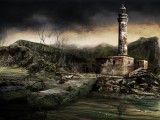
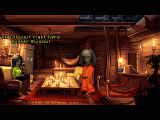

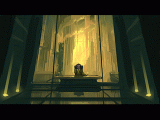




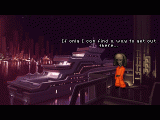

Share